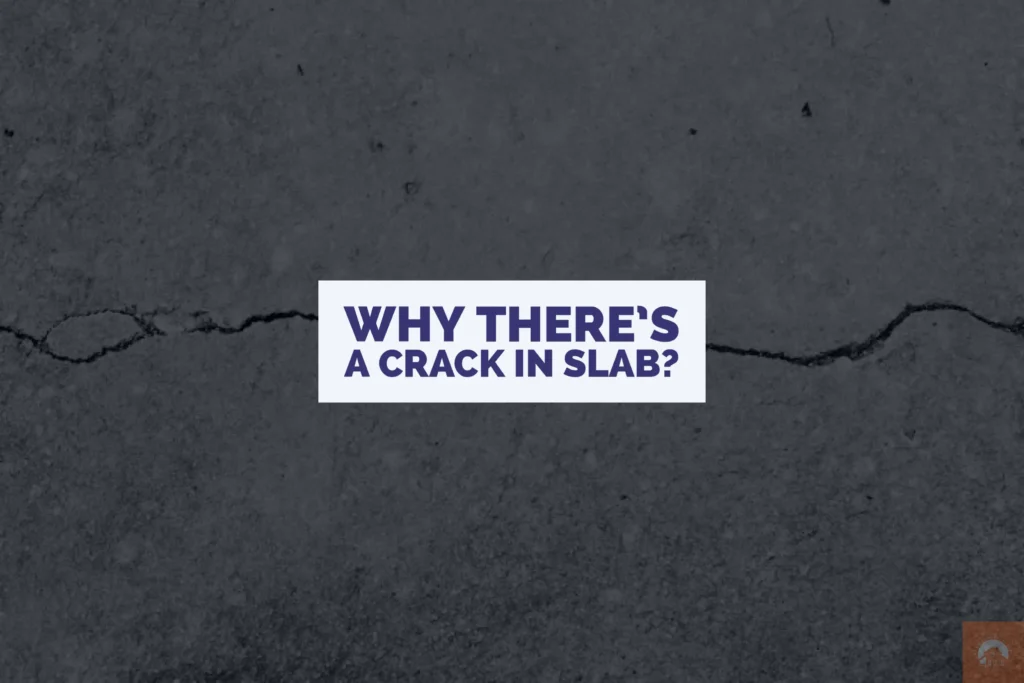Phone:
(770) 925-2188
Physical address:
4230 Lawrenceville Hwy
Lilburn, Georgia.
You’ve spotted a crack in your foundation slab, and naturally, you want answers quick. Cracks can form due to a variety of reasons like soil shifts, temperature changes, tree roots, or even initial construction missteps.
Hearing the creaks and groans of a house settling over time might be part of life’s symphony, but a slab crack is your cue that the concert needs reviewing.

Mainly, a crack in the slab foundation can appear due to below reasons:
Having rolled up my sleeves on numerous construction sites, I’ve witnessed how even slight shifts in the soil underneath can lead to visible fissures across your concrete slab. Consider soils like clay that expand with moisture and contract when dry – kind of like how jeans feel tighter or looser depending on the wash cycle.
In the residential untamed outskirts near Denver, Colorado, the beauty of a barndominium’s perfect slab showed a crack within its first year. Upon closer examination, a significant soil contraction due to a spell of dryness caused the slab to settle more than expected.
What about the weather – concrete’s silent foe? Temperature swings cause concrete to expand and contract. A Florida residence I revisited years after its slab was laid bore testament to the havoc humidity interplayed with hot days and cooler nights can wreak on an unprepared slab.
Sometimes, the answer to “Why is there a crack?” is tagged all the way back to square footing one. The compaction and treatment of the soil, quality of the concrete mix or even pace of the pour can stage the settings for future cracking. Construction details matter – a commercial builder in rural Georgia circumvented this, opting for control joints designed to accommodate such movement in the slab intentionally.
Don’t overlook the green-thumbed culprits outside either. Tree roots stretch far and wide, like a hug from Mother Nature herself. But these embraces under a slab can cause undue pressure – a reality faced when managing a suburban Californian bio-office that unwisely kept heritage trees tight aboard its slab’s periphery.
A robust foundation slab is akin to a regular fitness regime for your home. Ignoring a crack can escalate situations, with repair costs ballooning from single-digit repairs-per-linear-foot to overbearing
tens of thousands if left unchecked. Consider a client in Austin who uncovered a small crack; proactive sealing with epoxy right away skirted a surgical financial strike that higher corrective expenses would’ve shoehorned in later.
When it comes to the economics of foundation maintenance, prompt responses to small cracks are like catching a cold before it becomes pneumonia. And believe it, cost-saving is your partner in this dance. Taking the early steps for repair can cost as little as a few hundred dollars, keeping the structure safe and the bank account happier.
In contrast, I recall a historic Texas inn, whose neglected slab cracks from yesteryears’ minor feat sprawling tall paved the pathways for a total foundation overhaul near the $30,000 mark—a stiff fee that would have easily been avoided with earlier scrutiny and nominal repair.
For a clear-eyed approach to dealing with slab cracks, gather wisdom from foundation specialists. It’s similar to consulting a personal trainer—you’re investing in the proper techniques to ensure health and longevity. By addressing the setback quickly and correctly, the therapist for your building’s base can erase signs of wear from its stony expression efficiently and effectively.
Understanding the whims that cause slab cracks places solid power back in your hands. Similar to keeping healthy or running a steady ship, attending to your foundation is about quick measures, dedicated care, and embracing that the ground beneath us isn’t always still. I’ve witnessed that foundations cherished last lifetimes, underscoring a partnership with homeowners who keenly perceive the signs and meet them with eagle-eyed command.
As property stewards, nurturing vigilance and immediate small acts of repair kindness yield a foundation—or home—resolutely devoid of unplanned splits and preserved peace. Remember, in the language of foundations and surrounding living homes that embrace sky, vigilance and quick tender-footed responses compose the solace symphony of longevity.